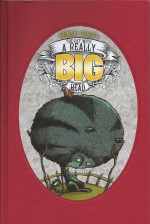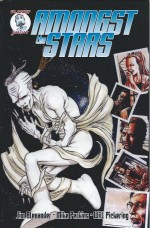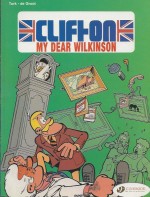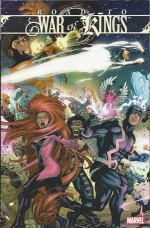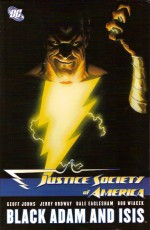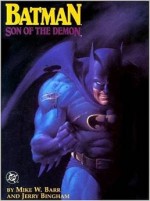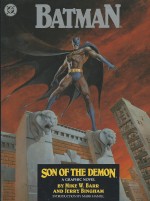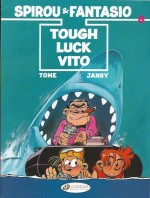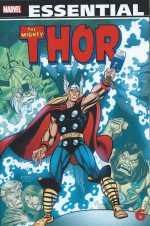
By Gerry Conway, Roy Thomas, Bill Mantlo, Len Wein, John Buscema, Rich Buckler, Sal Buscema & various (Marvel)
ISBN: 978-0-7851-6329-9
Whilst the ever-expanding Marvel Universe had grown ever-more interconnected as it matured through its first decade, with characters literally tripping over each other in New York City, the Asgardian heritage of Thor and the soaring imagination of Jack Kirby had most often drawn the Thunder God away from mortal realms into stunning, unique landscapes and scenarios.
However by the time of this sixth Essential monochrome compendium, the King had been gone – and was in fact readying himself to return to the House of (mostly his) Ideas – for five years and only echoes of his groundbreaking presence remained. John Buscema had visually made the Thunder God his own whilst a succession of scripters struggled to recapture the epic scope of Kirby’s vision and Stan Lee’s off-kilter but comfortingly compelling faux-Shakespearean verbiage…
When these monthly episodes (from Thor #221-247, March 1974 to May 1976) saw print, the Thunder God and his cosmic companions had become a quarrelsome, self-doubting band of fantasy spacemen generally roving the outer limits of the Marvel Universe, only occasionally touching base with Earth and Asgard, but that editorial policy began to change here as more and more adventures began – and ended – in the troubled lands of Midgard…
With scripter Gerry Conway firmly in the driving seat and legendary illustrator John Buscema (aided by inker Mike Esposito) delivering the art, the mythic mayhem opens with ‘Hercules Enraged!’ as the Thor brutally invades Olympus, in search of the Grecian Prince of Power. Asgardian maiden Krista has been abducted and All-Father Odin has seen a vision of her enchained in Hades with the Thunderer’s trusted ally gloating over her beside vile netherlord Pluto…
By the time lordly Zeus has stopped the shattering clash that follows, half of the celestial city is in ruins, but in that breathing space he proves Hercules is innocent of the atrocious act and the abashed comrades turn their attentions to the true culprit…
Inked by Joe Sinnott, Thor #222 finds the earnest comrades in search of Hercules’ insidious impersonator and taking advice from a scary sorceress even as war-god Ares receives an eldritch summons to meet his co-conspirator ‘Before the Gates of Hell!’
Sadly he is intercepted by the heroes before he gets there and receives the sound thrashing he deserves, prior to the enraged companions storming their way into the netherworld itself.
At the moment of their triumph however Pluto snatches up his hostage and vanishes. His trail leads to Earth where one final confrontation results in ‘Hellfire Across the World!’ (Esposito inks) and leaves kidnapped Krista near death…
Issue #224 finds Thor resuming his alter ego of surgeon Don Blake to operate on the Asgardian even as elsewhere in Manhattan a rash scientist accidentally reactivates Odin’s unstoppable battle construct and discovers ‘No One Can Stop… the Destroyer!’
With Krista saved Thor joins the sorely pressed Hercules and although outmatched by the Asgardian killing machine they devise a way to stop its human power source – only to then face ‘The Coming of Firelord!’ (inked by Sinnott).
The tempestuous, short-tempered herald of planet-consuming Galactus has been sent to fetch Thor and will brook no refusals…
Issue #226 finds the voracious space god on Earth, beseeching the Thunder God’s aid in ‘The Battle Beyond!’ (Esposito) against living planet Ego, who has seemingly gone mad and now poses a threat to the entire universe…
“Homaging†Jack Kirby, penciller Rich Buckler joined Conway and Sinnott in #227 as the Thunder God and Hercules – with Firelord in tow – go ‘In Search of… Ego!’ Penetrating deep within the raving planet and defeating incredible biological horrors, the trio reach his malfunctioning brain and relive the incredible origin of the “bioverse†in ‘Ego: Beginning and End!’ before contriving an earth-shaking solution to the wild world’s rampages…
In a final act of unlikely diplomacy the Thunderer then finds a replacement herald and secures Firelord’s freedom from Galactus…
Safely back on Earth a new kind of terror manifests in Thor #229 as ‘Where Darkness Dwells, Dwell I!’ (Conway, Buckler & Chic Stone) sees Hercules uncover an uncanny string of suicides amongst the mortals of Manhattan. After consulting the Storm Lord and his recently returned lover Sif, the Prince of Power is ambushed by a shadowy figure and himself succumbs to dark despondency…
Plucked from psychological catatonia by Iron Man and the recuperating Krista, severely shaken Hercules recovers enough to lead Thor under the city to jointly confront and conquer a horrific lord of fear in #230’s ‘The Sky Above… the Pits Below!’ (Buckler & Sinnott).
Of greater moment is the revelation in Asgard that almighty Odin has gone missing…
John Buscema returned in #231, inked by Dick Giordano to limn ‘A Spectre from the Past!’ wherein Thor learns that his former love Jane Foster is dying. Whilst doting Sif fruitlessly returns to Asgard seeking a cure, the grieving Thunderer is momentarily distracted when Hercules is attacked by anthropoidal throwback and disembodied spirit Armak the First Man who possesses the body of an unwary séance attendee and runs amok in the streets.
Since gaining his liberty Firelord had been aimlessly travelling the globe. Lured by Asgardian magic he becomes wicked Loki’s vassal in ‘Lo, the Raging Battle!’
Heartsick Thor meanwhile will not leave Jane’s hospital bedside, prompting Sif and Hercules to travel to the end of the universe to retrieve the mystic Runestaff of Kamo Tharnn. No sooner do they depart than the ensorcelled Firelord attacks and whilst incensed, impatient Thor knocks sense back into him, his evil half-brother leads an Asgardian army in a sneak attack on America…
With ‘Midgard Aflame’ (Buscema & Stone) Thor leads the human resistance and learns for the first time that his father is missing. Odin’s faithful vizier reveals that the All-Father has divested himself of his memory and chosen to reside somewhere on Earth as a hapless mortal…
With the humans preparing to unleash their atomic arsenal against the Asgardians, the invasion suddenly ends with a savage duel between Thor and Loki in ‘O, Bitter Victory!’ (Buscema & Sinnott) after which the Thunderer returns to Jane’s side, unaware that he is being stalked by a merciless old enemy. At the same time Sif and Hercules have clashed with he ‘Who Lurks Beyond the Labyrinth!’ and secured a remedy for Thor’s mortal beloved…
Thor #236 opens as the Storm God revels in furious combat with the Absorbing Man. Unknown to the blockbusting battlers, at that very moment Sif is expressing her own love for her wayward prince by using the Runestaff to fix Jane in ‘One Life to Give!’
…And somewhere in California an imposing old man called Orrin ponders his strangely selective amnesia and wonders how he can possibly possess such incredible strength…
With battle concluded Thor hastens back to Jane and finds her completely cured. His joy is short-lived however as he realises that Sif is gone, seemingly forever…
Issue #237 finds reunited lovers Don Blake and Jane Foster cautiously getting reacquainted and pondering Sif’s incredible sacrifice when a horde of Asgardian Trolls led by ‘Ulik Unchained’ calamitously attack New York. Before long they have made off with the recently restored Jane under cover of the blockbusting melee that ensues…
Gerry Conway concludes his run with Thor #238 as the Thunder God capitulates to his hostage-taking foe and is taken below the worlds of Earth and Asgard on the ‘Night of the Troll!’
Ulik wants to overthrow his king Gierrodur and is confident his hold over mighty Thor will accomplish the act for him, but he is utterly unprepared for the new martial spirit which possesses his formerly frail mortal hostage Jane…
…And in California old man Orrin decides to use his power to help the poor, quickly arousing the ire of the local authorities…
Writer/Editor Roy Thomas and artist Sal Buscema join Sinnott in Thor #239 as the Thunder God brutally ends his association with the trolls even as in California Orrin’s rabble-rousing civil unrest is cut short when a colossal pyramid containing Egyptian gods erupts from the ground in ‘Time-Quake!’
Thor knows nothing on the latest upheaval. He has taken off for distant Asgard, uncovering a mysterious force draining his people of their power and vitality. Warned by duplicitous seer Mimir the anguished godling rushes back to Earth and clashes with the puissant Horus ‘When the Gods Make War!’ (Thomas, Bill Mantlo, Sal Buscema & Klaus Janson). The depleted Egyptian pantheon have desperate need of an All-Father and have conditioned Odin/Orrin to believe that he is their long-lost patron Atum-Re…
Jane is already waiting in California when Thor arrives and she is present when the elder deity devastatingly assaults his astounded son. Happily her cool head prevails and soon the warring deities are talking. An uneasy alliance forms and the truth comes out. Horus, Isis and Osiris are in a final battle with vile Death God Seth and need the power of a supreme over-god to assure a victory for the forces of Life…
The cosmic conflict concludes in #241 as ‘The Death-Ship Sails the Stars!’ (Mantlo, John Buscema & Sinnott) with the ghastly Seth and his demonic servants repulsed and Jane again playing a major role: even shaking Odin out of his mind-wiped state…
A semblance of creative stability resumed with #242 as writer Len Wein joined John Buscema & Sinnott, beginning their tenure with epic time travel tale ‘When the Servitor Commands!’ The colossal all-conquering construct had scooped up Thor, Jane and visiting Asgardians Fandral the Dashing, Voluminous Volstagg and Hogun the Grim at the behest of malevolent chrononaut and old enemy Zarrko…
The Tomorrow Man is claiming to be on the side of the angels this time: looking for heroes to help stop a trio of entropic entities travelling back from the end of time and destroying all life as they go. Although suspicious, the assemble crusaders agree to help stop ‘Turmoil in the Time Stream!’ caused by the diabolical Time-Twisters…
Constant clashes with vagrant monsters and warriors plucked from their own eras barely slows the heroes but neither do they hinder the widdershins progress of the Armageddon entities in ‘This is the Way the World Ends!’ However by the time the voyagers discover ‘The Temple at the End of Time!’ which spawned the Time-Twisters and end the crisis before it began, Zarrko has already reverted to type and tried to betray them… much to his own regret…
This bombastic battle book then concludes with a 2-part rematch between Thunder God and Flaming Fury as #246 reveals ‘The Fury of Firelord!’, following the unworldly alien’s meeting with a lovely witch working for Latin American rebel and would-be tin pot dictator El Lobo.
However, whilst Thor heads south to stop a civil war in Asgard, his boon companion Balder comes to a staggering conclusion: Odin may be back in body but his spirit is still ailing. In fact the All-Father might well be completely insane…
When Thor also succumbs to sinister gypsy enchantments and ‘The Flame and the Hammer!’ unite to crush the feeble democracy of Costa Verde, once again vibrant valiant Jane is there save the day…
To Be Continued…
The tales gathered here may lack the sheer punch and verve of the early years but fans of ferocious Fights ‘n’ Tights fantasy will find this tome still stuffed with intrigue and action, magnificently rendered by artists who, whilst not possessing Kirby’s vaulting visionary passion, were every inch his equal in craft and dedication, making this a definite and decidedly economical must-read for all fans of the character and the genre.
©1974, 1975, 1976, 2012 Marvel Characters, Inc. All rights reserved.
